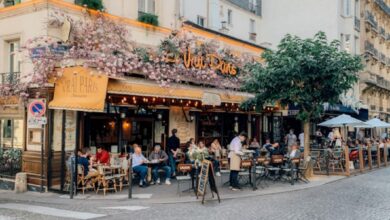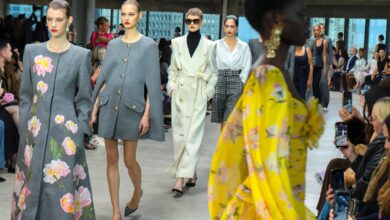Pantone: 2018 will be an ultraviolet year
All you need to know about the color you will see everywhere

The tone we will see in the streets, wardrobes and windows of 2018 is the Ultra violet (18-3838). This is a violet tone "dynamically provocative and thoughtful, communicating originality, ingenuity and visionary thinking that points us to the future" published Pantone on his Instagram account in December 2017.
Leatrice Eiseman, director and executive of the Pantone Color Institute, declared for the New York Times that "it is the most complex of colors" since "it is formed by two diametrically opposed tones, blue and red, that come together to create something new". This tone stands out for gathering sensuality and spirituality in equal parts. It will be seen in velvet, iridescent fabrics, floral designs, used in oufits for work, in dresses, skirts, sweaters, etc.
This color goes beyond the trends in the world of design and "is really a reflection of what is needed in our world today" argues Laurie Pressman, Vice President of the Pantone Color Institute.
The Pantone Color Institute was founded in 1962. It is a consultancy that has been forecasting global color trends since 2000. It is in charge of advising companies on their colors in the identity of the brand and in the development of their products. They also do consulting on how to use color as a strategic asset for sales. They are based on the psychology and emotion of color, as well as taking IGNORE INTO account their power to develop design strategies.
Artists like Prince, David Bowie and Jimi Hendrix carried purple tones that brought violet to the forefront of pop culture. This color has been granted, through history, an altitude value.
Where does violet come from?
In 1856, William Perkin, a student at the Royal College of Chemistry, who was only 17 years old, was trying to figure out a way to replace the extraction of the quinine with a compound that could be developed in a laboratory. Quinine was extracted from the Peruvian tree quino, and was used to prepare gin with tonic, since it was considered medicinal in the nineteenth century. However, this process was very expensive.
Young Perkin's mentor was August Wilhelm Hofmann, who had become famous for being an expert in coal tar. This was a black material of bad smell that was used to make water resistant coats, when distilling it came out different kinds of chemicals, among them the key ingredient was obtained to dye yellow French silks. Hofmann believed that he could also obtain quinine from coal tar chemicals. The formula was that the gin and tonic contained a part of gin and three parts of tonic water, in cocktail of quinine were 20 parts of carbon, 24 of hydrogen, 2 of nitrogen and 2 of oxygen (C20H24N2O2).
Perkin experimented by taking a compound that had half the amount of the elements and tried to paste them. His experiment failed. The only thing he achieved was to create an intense and striking color than any other that existed before. Violet caused a stir in the world of fashion and in society in general. Despite this, this tone was only accessible to the upper class because of the costly process. Because of that, it was related to royalty.
Finally, Perkin was dedicated to viralize his process, the color purple became popular and this 2018 it comes with force.
Latin American Post | Cinthia Flores
Copy edited by Laura Rocha Rueda




